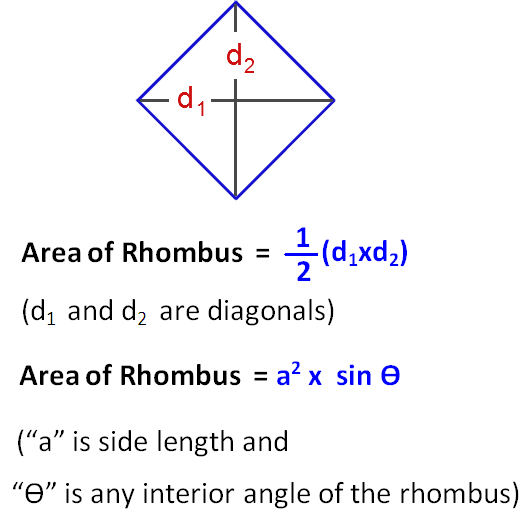A rhombus has sides 8 cm in length and its shortest diagonal is 10 cm in length. What is the area of the rhombus to the nearest cm^2?
2 Answers
Refer to explanation
Explanation:
 Onlinemath4all
Onlinemath4all
As you can see from the diagram, the area of a rhombus is the the two diagonals multiplied together and divided by 2.
From the information given in the problem, we know the each side of the rhombus is
We are first going to cut in fours,as shown in the diagram, having the hypotenuse as 8cm and the opposite as 5cm. To find the adjacent, we will use Pythagora's theorem.
We want the adjacent so rearrange the equation to make
To remove the square, take the square root of the equation.
Now substitute the values for b and c to calculate a.
Since it is half the length, multiply
From the diagram, we now know both
Now apply the formula for the area of a rhombus.
Explanation:
The area is the cross product of the two sides.
One definition of the cross product is
In the case of a rhombus, the magnitudes are equal to the length of the equal sides and
The longest diagonal forms a triangle with the two sides and the largest angle between them, therefore, The Law of Cosines allows us to write:
We know that
Substitute equation [2] into equation [1]:

